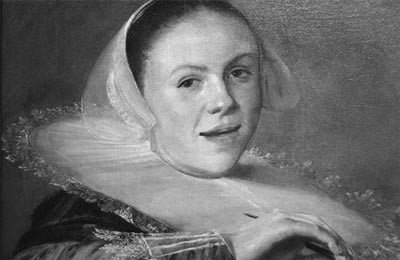Born: July 28, 1609, Haarlem, Netherlands
Died: Feb 10, 1660, Heemstede, near Amsterdam

Judith Leyster was the most renowned Dutch female artist of her era. Leyster specialized in portraits, still life and genre scenes (scenes of common people and everyday life). She is often associated with Dutch painter Frans Hals, with whom she is thought to have been acquainted, and who is acclaimed as one of the greatest masters of the genre scene.
Leyster was born into a non-artistic family in Haarlem, Netherlands. Art historians believe she studied with a local portrait painter, Frans Pietersz de Grebber, who also trained his own daughter to paint. When she was in her mid-twenties, Leyster became the only female member of the Haarlem painters’ guild and created her Self-portrait about 1635 (National Gallery of Art, Washington, D.C.), as a presentation piece to the guild. The eighteen paint brushes Leyster holds in this work convey a confident and self-assertive image of the artist.
Many of Leyster’s paintings depict musicians, such as The Flute Player (date unknown, Nationalmuseum, Stockholm, Sweden). One of her most original and frequently discussed images is the genre scene known as The Proposition or Man Offering Money to a Young Woman (1631, Mauritshuis, The Hague, Netherlands). This painting depicts a modestly dressed woman, sewing by candlelight and ignoring the attentions of an older man in a fur hat who is offering her gold coins. The image shows particular sensitivity to the vulnerability of unmarried women. Most of Leyster’s authenticated works were painted between 1633 and 1636, the year she married another Haarlem painter, Jan Miense Molenaer. The couple relocated to the larger city of Amsterdam, where it appears that she resided for the rest of her life. She bore three children, but, as is typical of female artists of her era, her artistic activity appears to have ceased after her marriage, and only one painting by Leyster survives from this later period.

